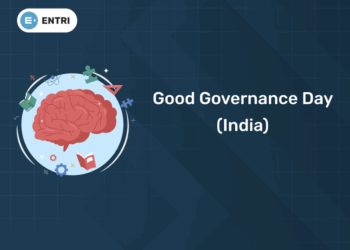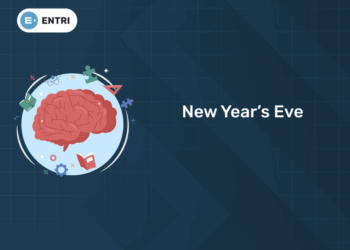Table of Contents
Technology company Zoho Corporation develops software for companies in a variety of sectors, including finance, sales, marketing, project management, and IT management. The firm was founded in 1996 with the goal of creating intelligent technologies to improve business operations. The business views software development as a craft that produces valuable commercial goods.It’s a fantastic opportunity for prospective developers to reinvent their talents and create original applications by working at Zoho Corporation. To land your dream job, read our guide on Zoho Data Analyst interview questions if you intend to apply for positions at this firm.
Enhance your data science skills with us! Join our free demo today!
Introduction
Since its founding as a little startup in 1996, Zoho Corporations has expanded to become an international organization with offices all over the world and over 9000 employees. applications As A Service (SaaS) provider Zoho Corporations creates applications to address business issues. With more than 40 products, 1000 extensions, and more than 60 million users, Zoho is a product-based business that is expanding quickly.
Zoho Interview Process
1. Interview Process
- Written test
- Basic programming
- Advanced Programming
- Technical HR
- General HR
2. Interview Rounds
1. Written Test:
- Normally the first round is a written exam, it is now an online exam.
- Experienced players can bypass this round if they so want. The candidate must respond to multiple choice questions (MCQs) throughout this typically 90-minute phase.
- Depending on how difficult the questions are, there will be a different amount of questions—roughly 20 questions for harder topics.
- Now, don’t fear if you receive 40 questions or more; just realize that they are simpler.
- About 20 to 30 questions from the general aptitude and programming aptitude categories are included in this round.
- Around 30% to 50% of the questions are often general aptitude questions, with the remaining questions coming from C.
2. Basic Programming:
- A laptop will be given to you if the interview is in-person. For online interviews, a one-on-one meeting conducted using the Zoho Meet app will be used to proctor you.
- In addition to sharing your screen and video, the questions will be shared in the chat.
- Questions will center around fundamental programming languages such as C, C++, Java, etc. If you have a solid grasp of recursions, loops, and fundamental data structures, you can overcome this round.
3. Advanced Programming:
- After the first round of basic programming comes this one.
- This round of testing will truly assess your proficiency with algorithms, data structures, and problem-solving techniques.
- Usually, there is just one problem in this round, and you have 90 minutes to find a solution.
4. Technical HR:
Depending on how you did in the other rounds, you might or might not have a technical HR round. You are likely to bypass this round if your performance in the previous round was particularly strong. This round’s questions will focus on:
- Data Structures
- Approach the given Scenario
- Database Concepts
- And Some logical puzzles
5. General HR:
You can be very sure you’ve reached the company if you’ve made it this far. The general HR interview will resemble a casual conversation with questions such as these:
- Your family background
- Your hobbies
- The reason you chose Zoho
- finally, Your location preference
Note: You have the chance to ask questions during the General HR round. You are free to ask any questions you may have regarding the business or the next steps.
Enhance your data science skills with us! Join our free demo today!
Why Join in Zoho
The company Zoho is always coming up with new ideas and adding new products to its lineup. This keeps things interesting at work because there are constantly the fresh difficulties. Furthermore, because Zoho places a high priority on training and the growth, it’s a fantastic environment for everyone to advance their career and skill set.
Zoho is a prominent enterprise providing CRM and other essential business solutions. In the upcoming years, its value is anticipated to increase. It offers qualified professionals the chance to develop and discover their potential. It offers excellent salary packages, respectable pay increases, and an inspiring work environment. In addition to the flexible work schedules, they offer general job satisfaction.
There are various reasons why working at Zoho is a smart idea. Above all, they provide a competitive benefits and the pay package. In addition, they provide their staff with a host of benefits like the flexible work schedules, casual dress codes, and the ability to work from home. Furthermore, Zoho offers a number of initiatives for the staff development, including the mentorship and the leadership development. They also provide a lively and a very cooperative work atmosphere.
To further assist you in getting up to speed quickly, the Zoho offers excellent training and development materials. In conclusion, the business atmosphere is highly encouraging and cooperative, making it ideal for the recent graduates just starting their careers.
Zoho Data Analyst interview Preparation Tips
You don’t need to be familiar with every algorithm in existence to ace a Zoho interview. All you need is a solid grasp of the fundamental ideas like loops, recursions, pointers, etc., along with the strong problem-solving abilities. For the most part, the basic questions should have a rational answer. It genuinely neet requirements to simply answer the questions raised in this article.
1. Practice the problem-solving regularly:
People who are asking queries like “How long should I prepare for Data analysis before applying for a tech interview?” may be found on the internet. Something along the lines of, How many problems should I have solved in order to apply for the tech interviews?. It’s a very common mistake that, suppose if you’ve solved, any 500 problems, you can breeze through a technical interview. You must understand that “How to approach the given problem.” And the only way to learn that is by the constant practice.
2. Be interactive:
You should participate in the Data Structures & Algorithms and the System Design round and maintain the dialogue. Talk about your ideas clearly so the interviewer can follow your train of thought.
3. Be specific:
A common mistake made by applicants is to respond to the behavioral questions with just one or two sentences. Alternatively, they often hike on about worthless specifics. As an alternative, you want to respond breifly, focusing simply on the most important details.
4. Use the STAR method to answer the behavioral questions:
The STAR approach is the most effective strategy to organize your response to any behavioral question. The acronym for Situation, Task, Action, and Result is the STAR. You must first explain the situations, the task you had to do, the essential steps you followed to finish the work, and finally the outcomes you were able to obtain.
5. Write clean and readable code:
This is a important yet much overlooked piece of the advise. Aspirants believe that solving the issue will be enough and place less significance on producing the readable, well-written code. But be aware that in a product-based organization, creating the understandable and well-organized code is very important for a successful interview.
Enhance your data science skills with us! Join our free demo today!
Top Zoho Data Analyst Interview Questions and Answers
1: Which of the following algorithms is most suitable for classification tasks?
1. What do you mean when you refer to hash table collisions? Describe how to stay away from it.
Answer: Usually, when two keys have the same index, a hash table collision occurs. As a result, collisions generate issues because two elements in an array cannot occupy the same slot. To prevent such hash collisions, employ the following techniques:
- Separate chaining technique: In this method, many objects are stored in a data structure hashed to a common slot.
- Using the open addressing technique, an item is stored in the first empty slot it discovers after being located.
2. How may outliers be identified? Describe various approaches to addressing it?
Answer: There are two ways to find outliers:
- The box plot approach defines an outlier as a number that is either above or below the 1.5*IQR (interquartile range), or above the top quartile (Q3) or below the bottom quartile (Q1).
- By using the standard deviation approach, a number that deviates from the mean ± (3*standard deviation) is considered an outlier.
3. List the essential abilities that a data analyst should have?
Answer: The following are some essential competencies needed by a data analyst:
- Prior experience with databases (SQL, SQLite, etc.), coding languages (XML, JavaScript, ETL), and reporting packages (Business Objects) is essential.
- Capacity to efficiently and accurately gather, organize, analyze, and distribute large amounts of data.
- The capacity to segment data, create data models, do data mining, and develop databases.
- Strong proficiency in statistical software for big dataset analysis (SAS, SPSS, Microsoft Excel, etc.).
- Effective Communication Skills—Written and Verbal; Teamwork; Effective Problem-Solving.
- Outstanding in crafting presentations, reports, and inquiries.
- Knowledge of Tableau and Qlik, among other data visualization programs.
- The capacity to design and implement the most precise algorithms on datasets in order to identify answers.
4. Define data analysis process?
- Gather Information: Information is gathered from diverse sources and thereafter kept in order to be cleansed and organized. Eliminating any outliers and missing numbers is the goal of this procedure.
- Analyze Data: The analysis process begins as soon as the data is ready. Repeatedly running a model leads to improvements. The model is then verified to make sure it satisfies the requirements.
- Produce Reports: After the model is put into practice, reports are produced and given to the relevant parties.
5. What kinds of difficulties can one encounter when analyzing data?
Answer: A data analyst may run into the following problems when examining data:
- Spelling mistakes and duplicate entries. These mistakes might impair and lower data quality.
- Data that is represented differently can come from different sources. If the gathered data are mixed after being cleaned and arranged, it could slow down the analysis process.
- Incomplete data is a significant additional problem in data analysis. This would inevitably result in mistakes or subpar outcomes.
- If you were to extract data from a subpar source, cleaning the data would take a lot of time.
- Unrealistic expectations and timetables from business stakeholders.
- It can be difficult to combine and integrate data from several sources, especially if there are inconsistent guidelines and standards.
- Inadequate tools and data architecture to meet the analytical deadlines.
6. What is data cleansing?
7. List out the tools useful for data analysis?
- RapidMiner
- KNIME
- Google Search Operators
- Google Fusion Tables
- Solver
- NodeXL
- OpenRefine
- Wolfram Alpha
- io
- Tableau, etc.
8. Differentiate between data mining and data profiling.
| Data Mining | Data Profiling |
|---|---|
| Finding patterns requires examining a pre-built database. | It entails the raw data analysis of already-existing datasets. |
| In order to transform unprocessed data into meaningful information, it also evaluates big datasets and current databases. | This involves gathering data summaries that are statistical or instructive. |
| To provide meaningful information, it typically entails seeing hidden patterns and looking for fresh, practical, and non-trivial data. | Typically, it entails assessing data sets to guarantee their logic, consistency, and uniqueness. |
| Erroneous data is found in the early stages of analysis in data profiling. | In data profiling, erroneous data is identified during the initial stage of analysis. |
| During this phase, statistics or summaries of the data are gathered using findings and analytical techniques. | This process involves using discoveries and analytical methods to gather statistics or summaries about the data. |
9. What techniques do data analysts use for validation?
Answer: Determining the information’s accuracy and the reliability of the source are crucial steps in the data validation process. Numerous methods exist for validating datasets. Among the data validation techniques frequently employed by data analysts are:
- Data is validated using the field level validation technique as soon as it is entered into the field. You may fix the mistakes as you go.
- Form Level Validation: This kind of validation takes place following the user’s form submission. A data entry form is instantly reviewed, each field is verified, and any inaccuracies are indicated (if any) so the user can correct them.
- Data Saving Validation: When a file or database record is saved, this method verifies the data. When many data entry forms need to be evaluated, the procedure is frequently used.
- Validation of Search Criteria: It efficiently verifies the user’s search parameters to deliver relevant and accurate results. Its primary goal is to guarantee that a user’s query will yield highly relevant search results.
10. What is Outlier?
11. Explain the responsibilities of a Data Analyst?
- Employs statistical methods to gather, evaluate, and report data, with appropriate conclusions.
- Examine and evaluate patterns or trends in intricate data sets.
- Determining business requirements in collaboration with management or business teams.
- Look for ways to make the current regions or procedures better.
- Commissioning and decommissioning of data sets.
- When handling private or confidential data, abide by the rules.
- Analyze the updates and modifications made to the production systems’ source code.
- Train end users on the use of new dashboards and reports.
- Help with data mining, data cleansing, and data storage organization.
12. What is Hierarchical clustering?
13. Define the KNN imputation method?
14. What is Normal Distribution?
15. Define the data visualization?
16. How can you benefit from data visualization?
17. What do you meant by N-gram?
18. Explain logistic regression?
19. What is K-means algorithm?
20. Give an overview of collaborative filtering.
Answer: Collaborative filtering (CF) generates a recommendation system based on user behavioral data. Information is filtered out by examining data from other users and their interactions with the system. This approach makes the assumption that individuals who concur in their assessment of a certain item would probably concur once more in the future.
Enhance your data science skills with us! Join our free demo today!
🚀 Start Coding Today! Enroll Now with Easy EMI Options. 💳✨
Equip yourself with in-demand skills to land top-tier roles in the data-driven world.
Start Learning Now with EMI Options











